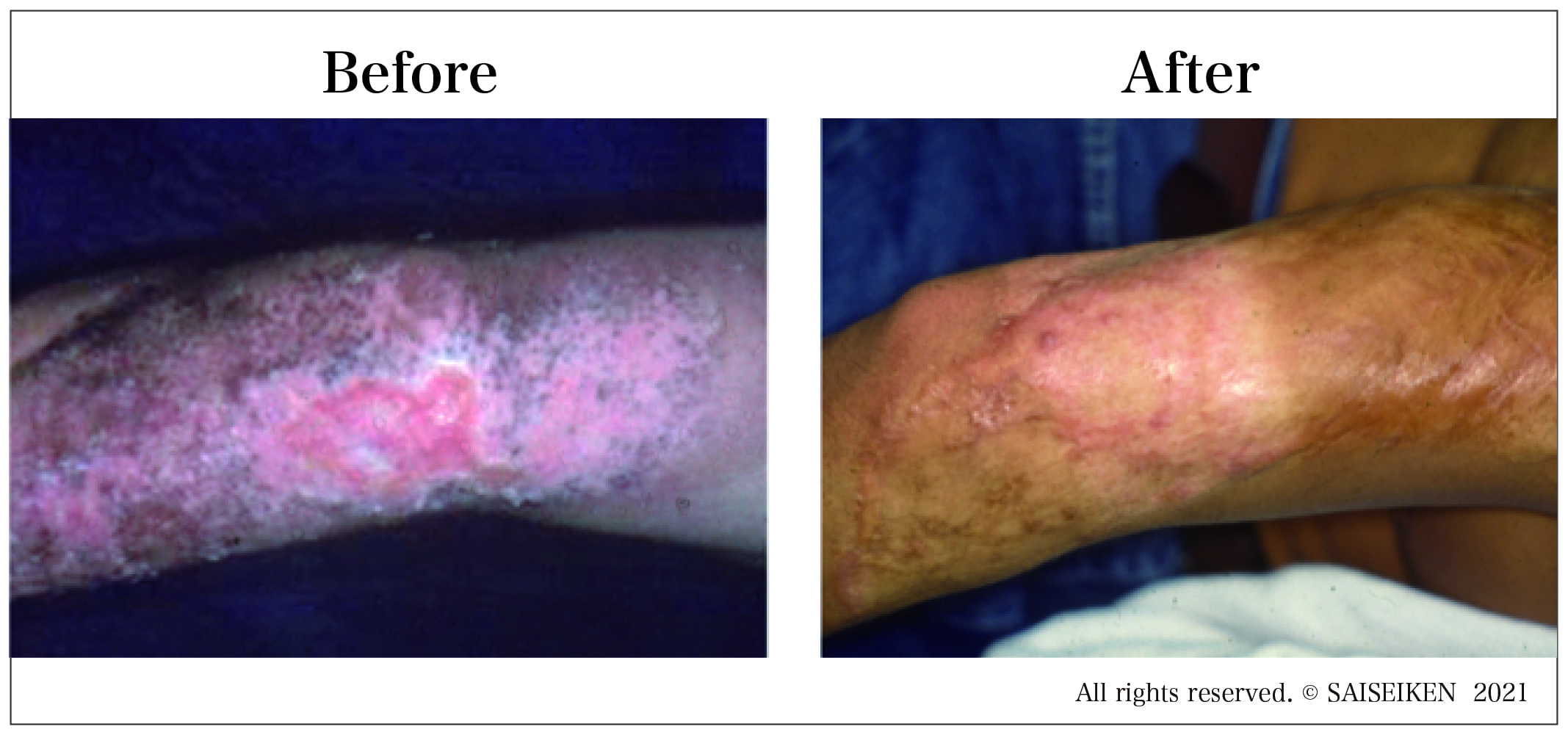Basic Research
- Skin Ulcer
An intractable chronic wound exerts considerable stress on patients, and treatment of such wounds is very difficult.
Surgery and medical treatments have been performed to treat such wounds. However, there are many problems, including failure of wound healing and scaring , with these treatments. In addition, wound closure and treatment effectiveness cannot be guaranteed in many cases. Therefore, effective treatment , measures must be established.
Many therapeutic approaches, including ointment, artificial skin, and substitute skin, have been developed.
Furthermore , cell scar-free wound healing, has been explored. Many reports have demonstrated that the differentiation and paracrine effects of mesenchymal stem cells (MSCs) accelerate wound healing. MSCs are referred to as stromal progenitor , self-renewing, and expandable stem cells and are able to differentiate into expandable stem cells and are able to differentiate into osteoblast , adipocyte, chondrocytes, and other cell types. However, bone marrow aspiration is invasive, and the quantity, proliferative capacity, and capability of differentiation of MSCs decrease with age,
Our study shown as below is based on the assumption that the wound – healing acceleration effect of MSC is caused
by growth factors secreted by MSCs , not by the function of the stem cells per se. We examined the effect of MSC-CM
by using wound-healing skin defect model and compared the effects of MSC-CM treatment with those of MSC and
control ( phosphate-buffered saline[PBS] ) treatment. Furthermore the amount HA, which plays an important biological
role in skin wound healing, was measured in each group.
Click on the image to see it clearly.
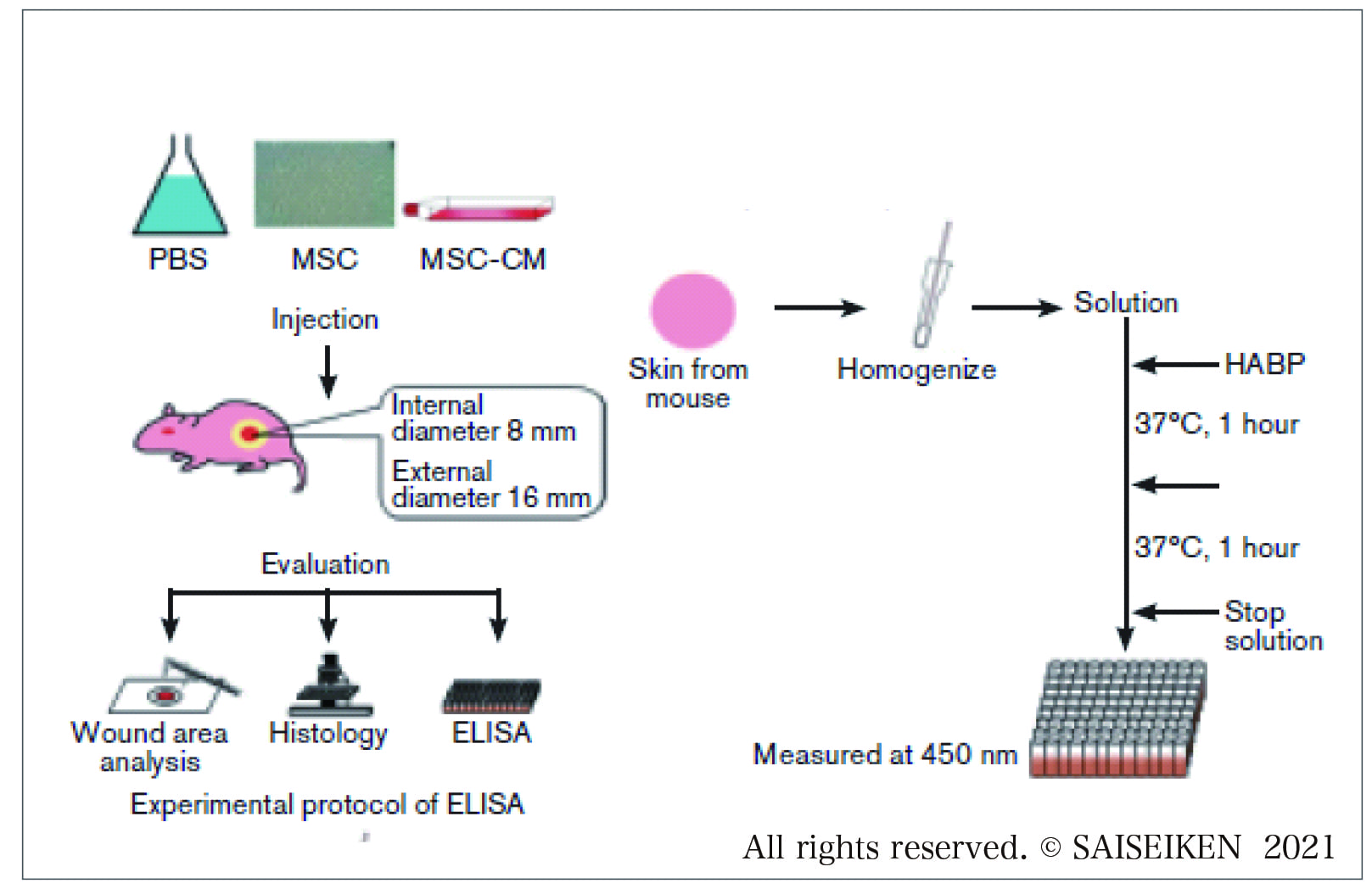
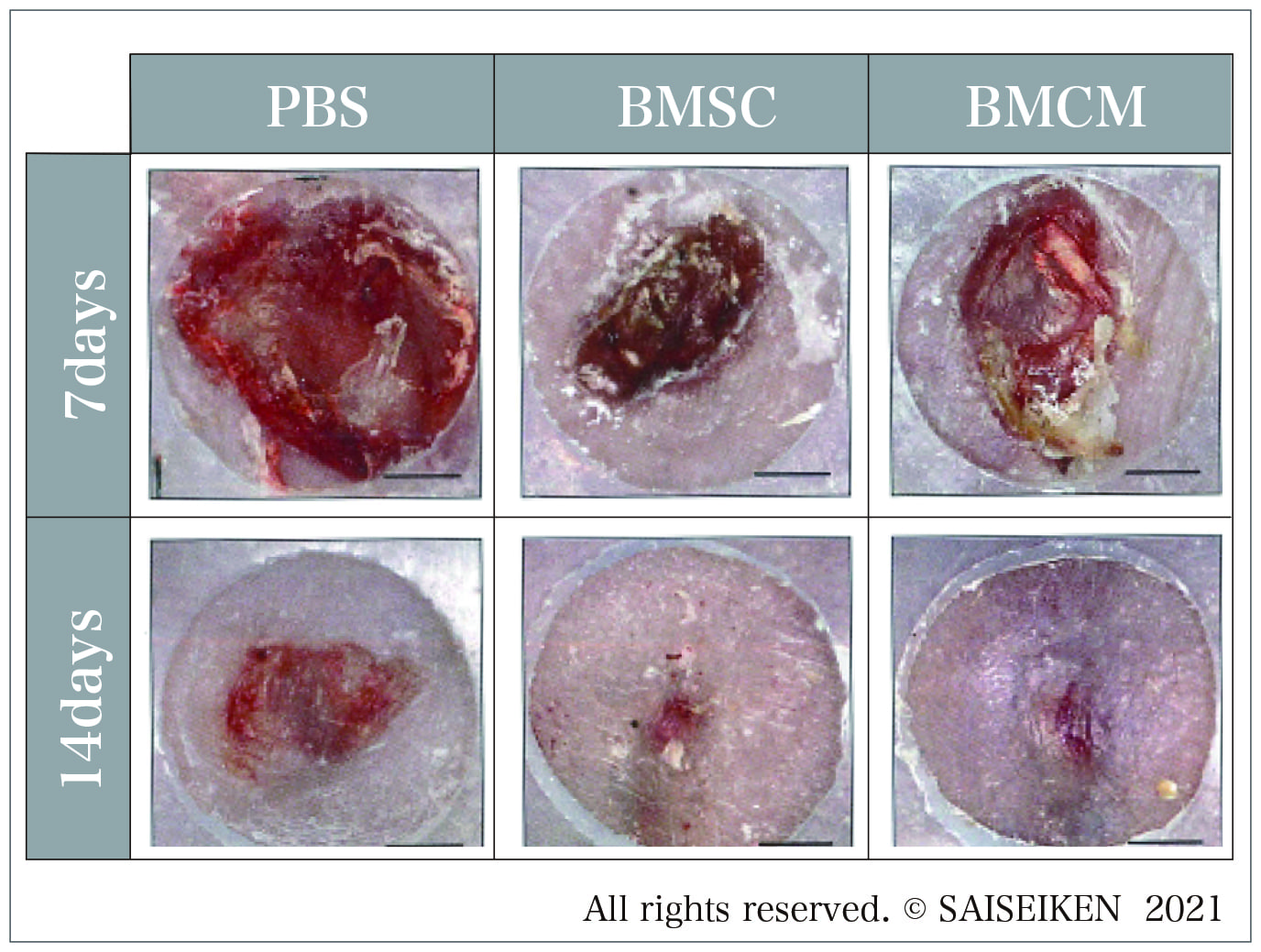
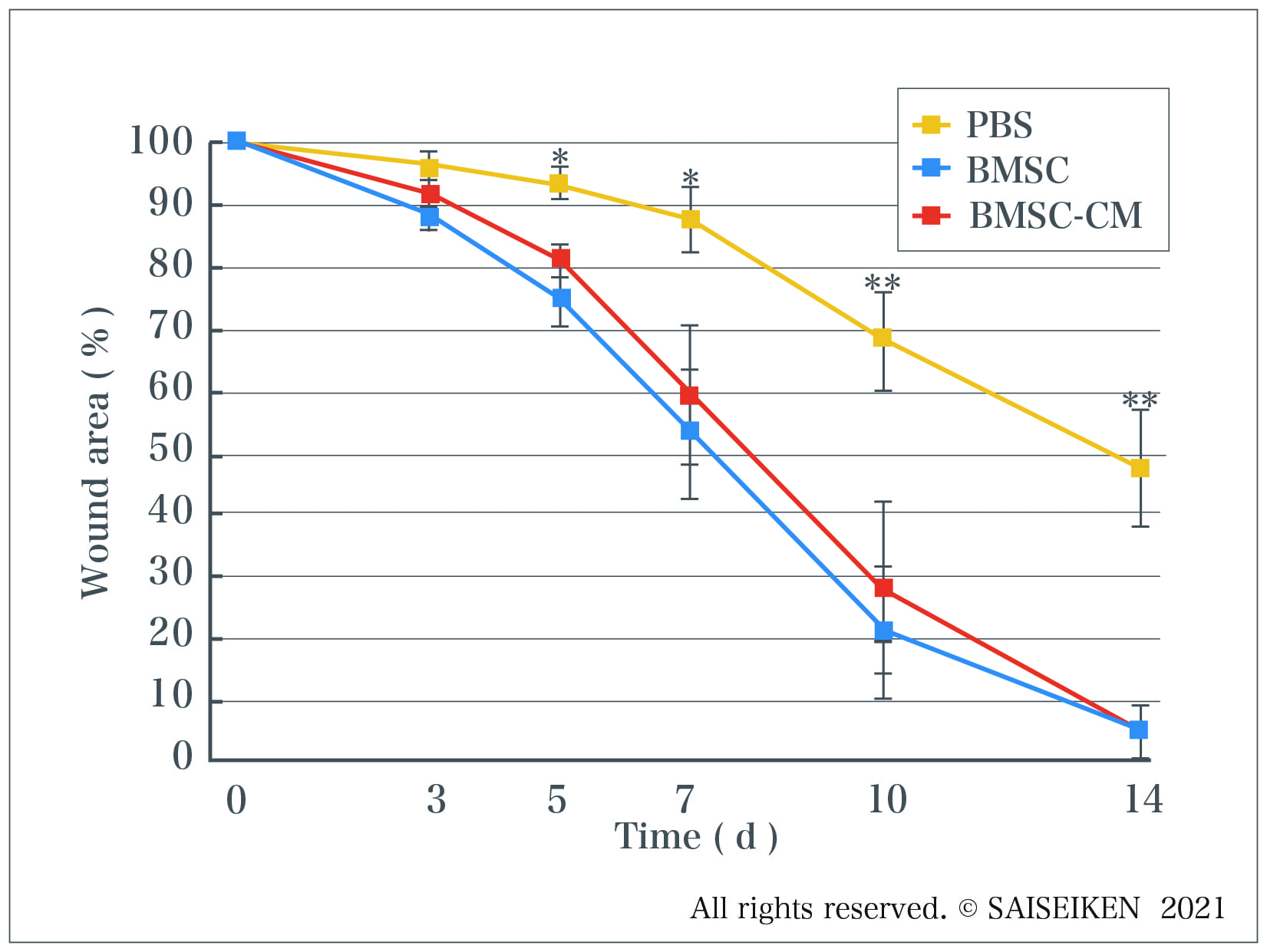
( Tamari M.et al Oral & Crani. Tissue. Eng. 2011 )
This figure shows that the effect of MSC and MSC-CM on wound healing are almost same.
HA production at 7days and 14 days after administration , determined with ELISA.*P<0.05 These findings shows that HA production ability by MSC and MSC-CM are completely equal.
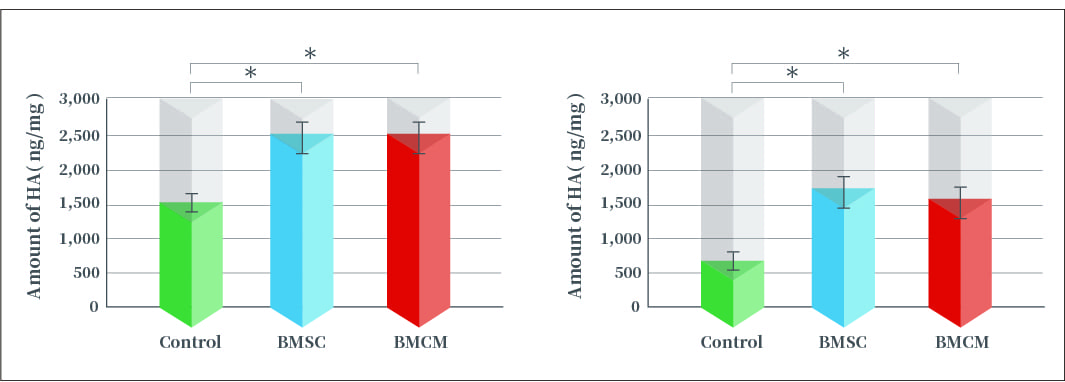
From now I will show you the clinical cases with intractable skin wound treated by MSC-CM.
Case 1. 70-year-old male ; Chronic stage of brain infarction. The patient had lost his consciousness and could not change his position by himself. He got an sacral pressure ulcer with infection. He received surgical debridement and sampled a stamp size skin . The epithelial cell was isolated from the sample and expanded and they were sprayed over the wound area with already prepared allogenic MSC-CM solution.
Three months later the wound area re-epithelialized successfully.
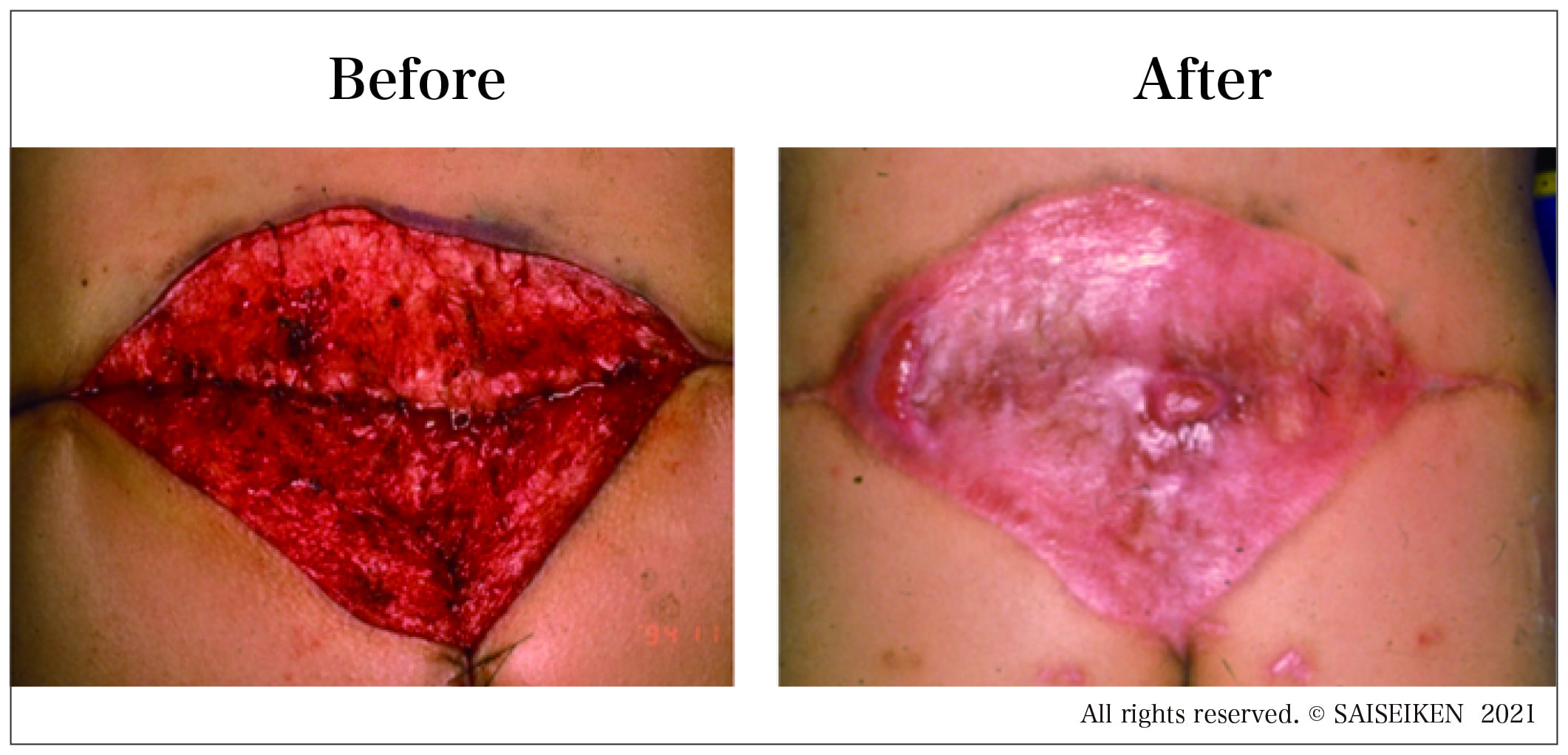
Case 2. 64-year-old male ; Wound healing failure due to irradiation.
The patient had a tongue cancer in the right side and a lymph nodes metastasis on the right neck.
He received the partial tongue resection and total neck dissection. After the surgery he received 60 Gy irradiation on the right neck to prevent the metastasis. However the neck wound separated and failed in wound healing 2 weeks after
surgery. Then we applied MSC-CM with fibrin grew as a matrix and succeeded to make wound closure within one month.
The right picture is a gross appearance one year later.
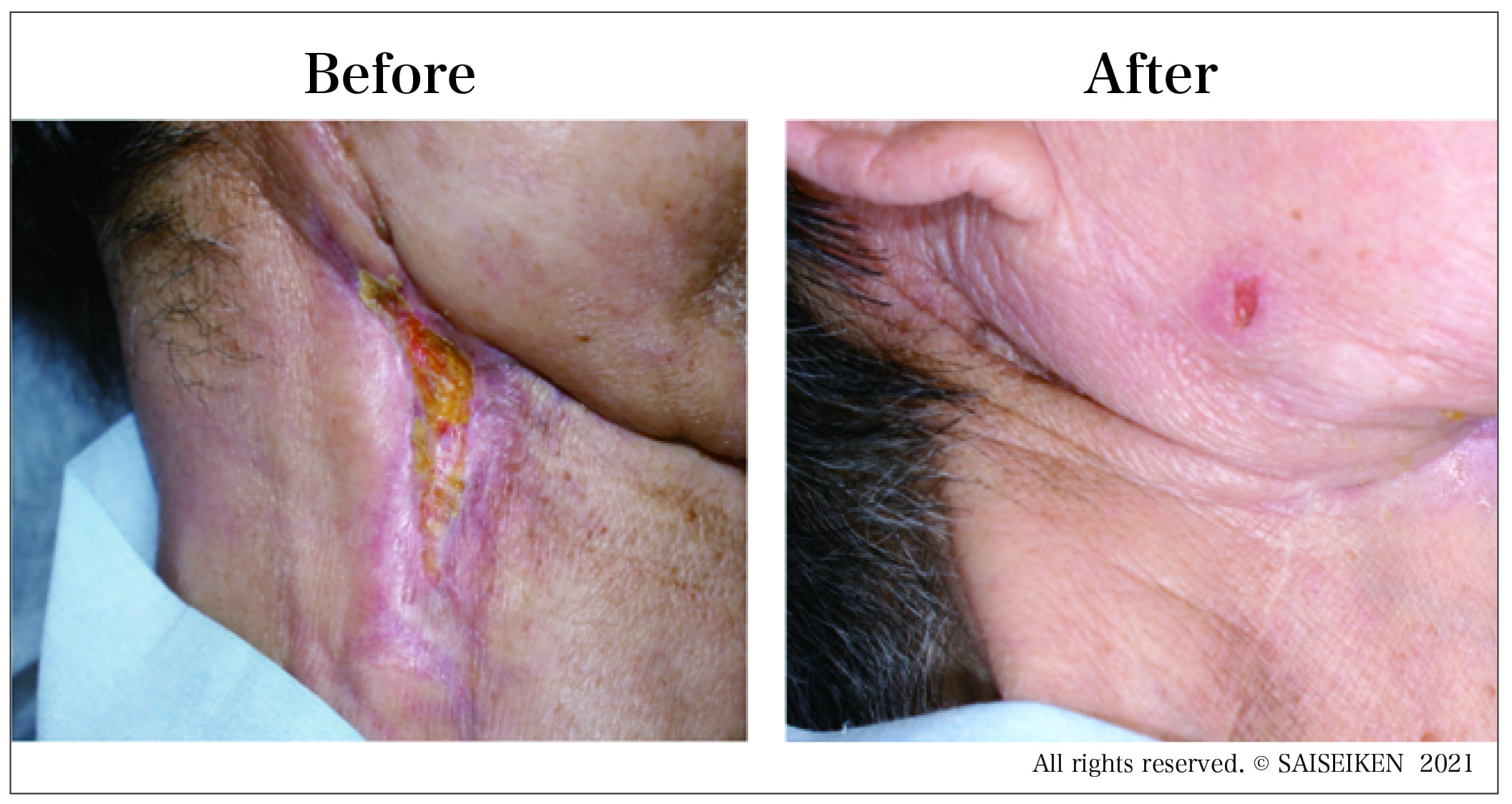
Case 3. 28-year-old male; a bournd wound
The patient suffered a fire accident on his right femur which was deep burn so it was imposible to heal spontaneously. We desinged the treatment plan firstly to use humant recombinant growth factor basic – FGF spray ( fibrast ®500 ) howeever the effect was not satisfactory.
Then we changed the plan to use the MSC-CM undiluted solution with wet gause in the morning and the evning.
One weels later after administration the health granulation was formed in the wound and three weeks later the ulcer was reepithelialized again. Right picture is a gross appearance 6 months after the accident.
